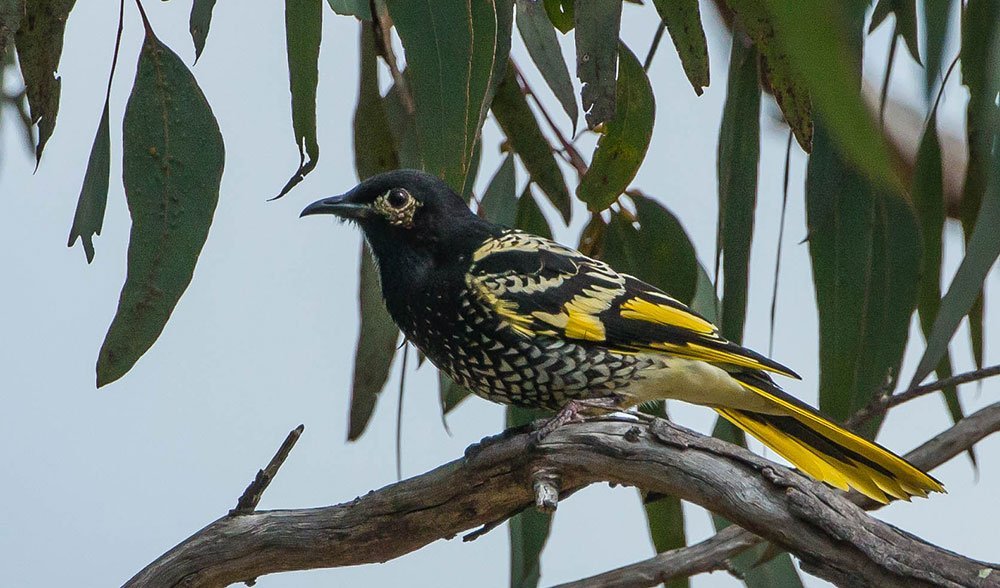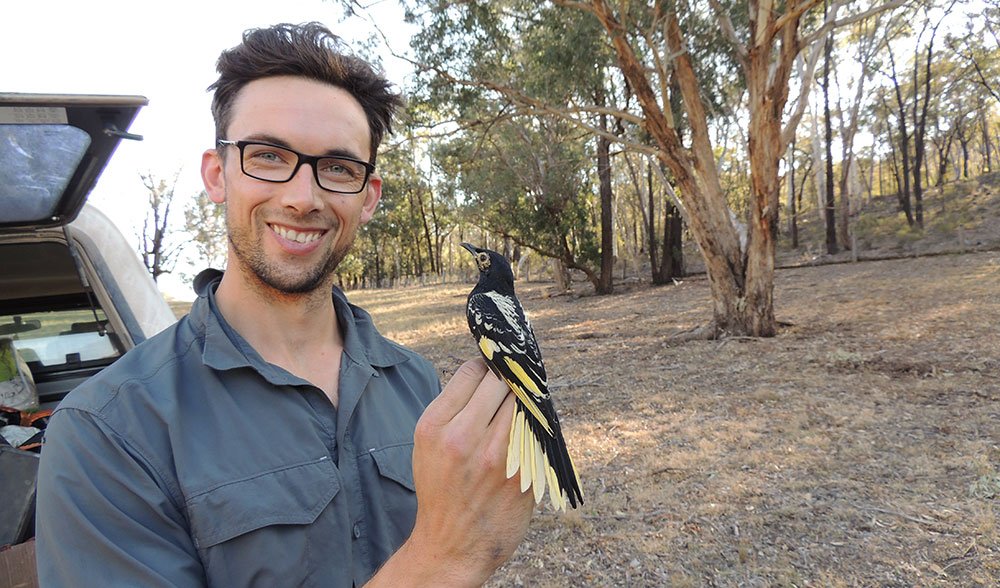New wild population of critically endangered honeyeater birds found

CONSERVATION EFFORTS FOR one of Australia’s most critically endangered animals have received a shot in the arm with the discovery of a new sub-population of regent honeyeaters near the Severn River in New South Wales’ New England Tablelands.
The 20 regent honeyeaters (Anthochaera phrygia) were discovered in the first months of a monitoring program by the Australian National University Fenner School of Environment and Society. While the number may seem small, lead researcher Dr Laura Rayner explained that with fewer than 400 of these native birds in the wild, the discovery is massive news.
“In such a small population, there’s an even smaller pool of birds that can breed,” said Laura. “It means a simple hail storm that takes out a couple of nests can be a massive blow to the population”.
“Twenty birds is exciting news.”

The crticially endangered regent honeyeater’s movements are being tracked in an ANU monitoring program. (Image credit: Murray Chambers)
As recently at the early 1990s, the small yellow wing-tipped bird was one of south-eastern Australia’s most abundant honeyeater, seen in flocks of hundreds across a range from Adelaide to Brisbane. But an intersection of issues has compiled to create what Laura describes as an “epic crash” of the regent honeyeater population.
“At first, the population loss was primarily driven by the destruction of temperate woodland habitats, which affected all types of birds. But there’s been a multitude of threats since then,” said Laura.
Unlike many species of honeyeater, Laura notes the regent honeyeater is almost exclusively dependant on nectar as a food source during the August to January breeding period. Key feed trees, like the yellow box, white box and mugga ironbark, are endangered in their own right, and they need to be found together and near the river she-oak on which the mistletoe that other birds for their nest grows.

The regent honeyeater is semi-nomadic, meaning it largely moves dependant on the availability of feed trees. (Image credit: Murray Chambers)
“And, then, if they’ve found a suitable spot, they’ll have to compete against lorikeets, noisy friar birds and noisy miners,” said Laura. “And with a smaller body, they usually lose out.”
The monitoring program covers 60,000sq. kms of ground from Central Victoria to Southern Queensland, which largely involves Laura using recorded bird calls to help detect the honeyeaters. A small team assists – bird enthusiast and conservationist Carol Probets respectively oversee efforts in Capertee Valleys, a vital area for the birds, while Dr Stephen Debus helps in the NSW New England Tablelands. ANU PhD candidate Ross Crates follow up on areas where birds have been detected for more thorough study – he located the nests of the new sub-population.

PhD candidate Ross Crates with a regent honeyeater in Capertree NP. (Image credit: Deb Andrew)
Laura noted that the ongoing research is partially informed by the public and their reported sightings of the bird over the last two decades. As it’s such a massive space, the sightings help the researchers determine where to target their monitoring program. And from there, they can know which areas of land need protection the most.
Information on how to report regent honeyeater (and other endangered birds) is available on Bird Life’s website. www.birdlife.org.au/get-involved/citizen-science
READ MORE:
- The secret world of bird baths
- Locally ‘extinct’ bird rediscovered after 178 years
- Top ten bird watching spots in Australia




